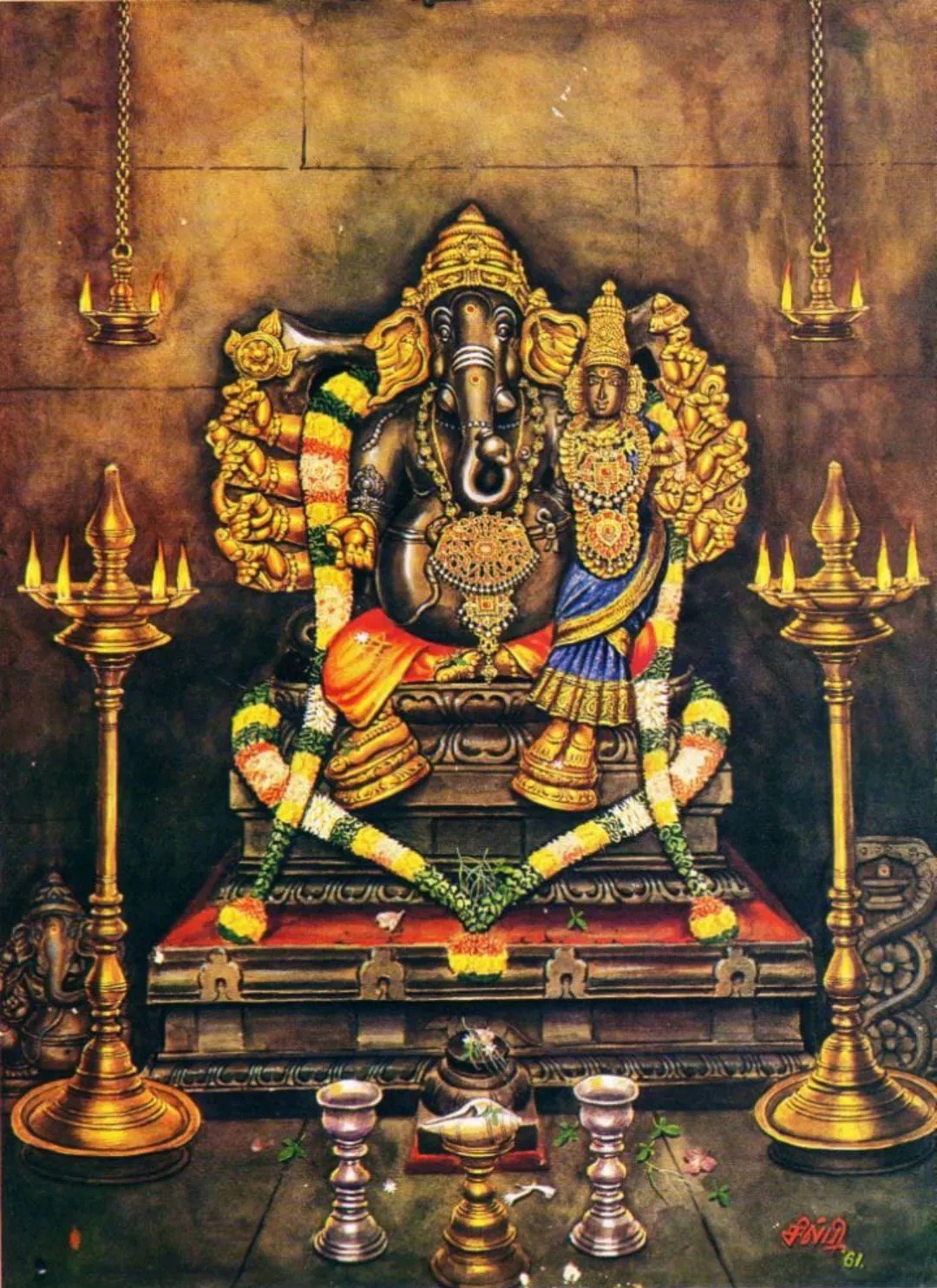- Edited

In a contemporary South Indian manual for the Tantric worship of Gaṇeśa entitled ‘Śrī-Mahāgaṇapati-Saparyā-Paddhati’ compiled by C. V. Swami Sastri, Madras 1961, there appears on pp. 99-106 the ‘Upaniṣad of the lord of Vallabhā’, a Tantric Upaniṣad related to the worship of Mahāgaṇapati who is referred to by the name Vallabheśa.
This Upaniṣad in four chapters is written in the form of a conversation between Kāśyapa and Marīci. Marīci, a form of Gaṇeśa is said to be the father of Kāśyapa and Vallabhā, or Siddhalakṣmī, the consort of Mahāgaṇapati, that is Vallabheśa.
The first chapter explains the nature of Vallabhā as māyā|prakṛti and that of Vallabheśa as brahman. Philosophical explanations are given in reply to Kāśyapa’s questions:
why Vallabheśa is called the lord of the gaṇas (Gaṇapati)
why he has an elephant’s face
why he has ten arms
why he is of red color
why he has three eyes
why he has the moon on his crest
why he is called cintāmaṇidvīpapati
how he causes the creation, maintenance and destruction of the universe
why he is called the lord of obstacles.
The second chapter explains why Vallabheśa is Kāśyapa’s sister’s husband and how Vallabheśa favored various devotees in the universe. It contains numerous references to stories concerning Gaṇeśa for many of which parallels could not be traced.
The third chapter explains the principal mantra of Vallabheśa along with references to its deity, metre, bīja, śakti, kīlaka and formulas employed in the rite of ṣaḍaṅganyāsa. The meditation verse describes the iconographical representation of this form of Gaṇeśa. He is depicted as having ten arms holding different attributes: a mace, a tip of the rice shoot, a discus, a lotus, a trident, a noose, a water-lily, a bow of sugarcane, a fruit of the citron tree, a tusk, which have been provided by the deities Varāha, Bhūmi, Viṣṇu, Śrī, Rudra, Gaurī, Rati, Kāma, Puṣṭi and Puṣṭipati. The eleventh attribute, a vessel with jewels, is held in Vallabheśa’s trunk.
The fourth chapter explains the worship of Vallabheśa, suitable days and timings, mantras and hymns, kinds of rituals to be performed, number of repetitions of the mantra, finally his yantra.
The Upaniṣad ends with statements of reward (phalaśruti).
Download PDF
Vallabhesa Upaniad.pdf
Source: Gudrun Buhnemann. Originally published in Indo-Iranian Journal 30 (1987), 243-263.

